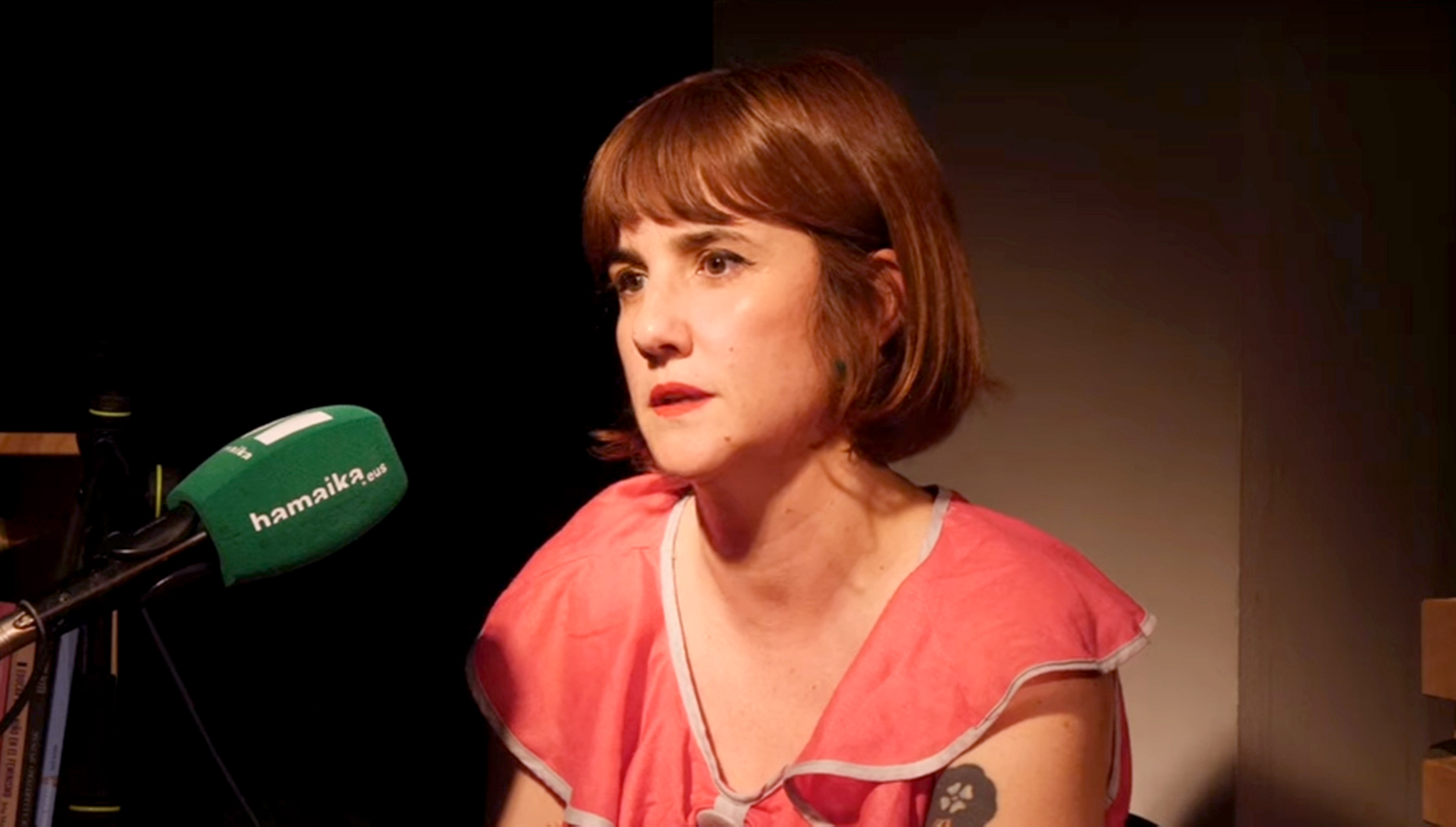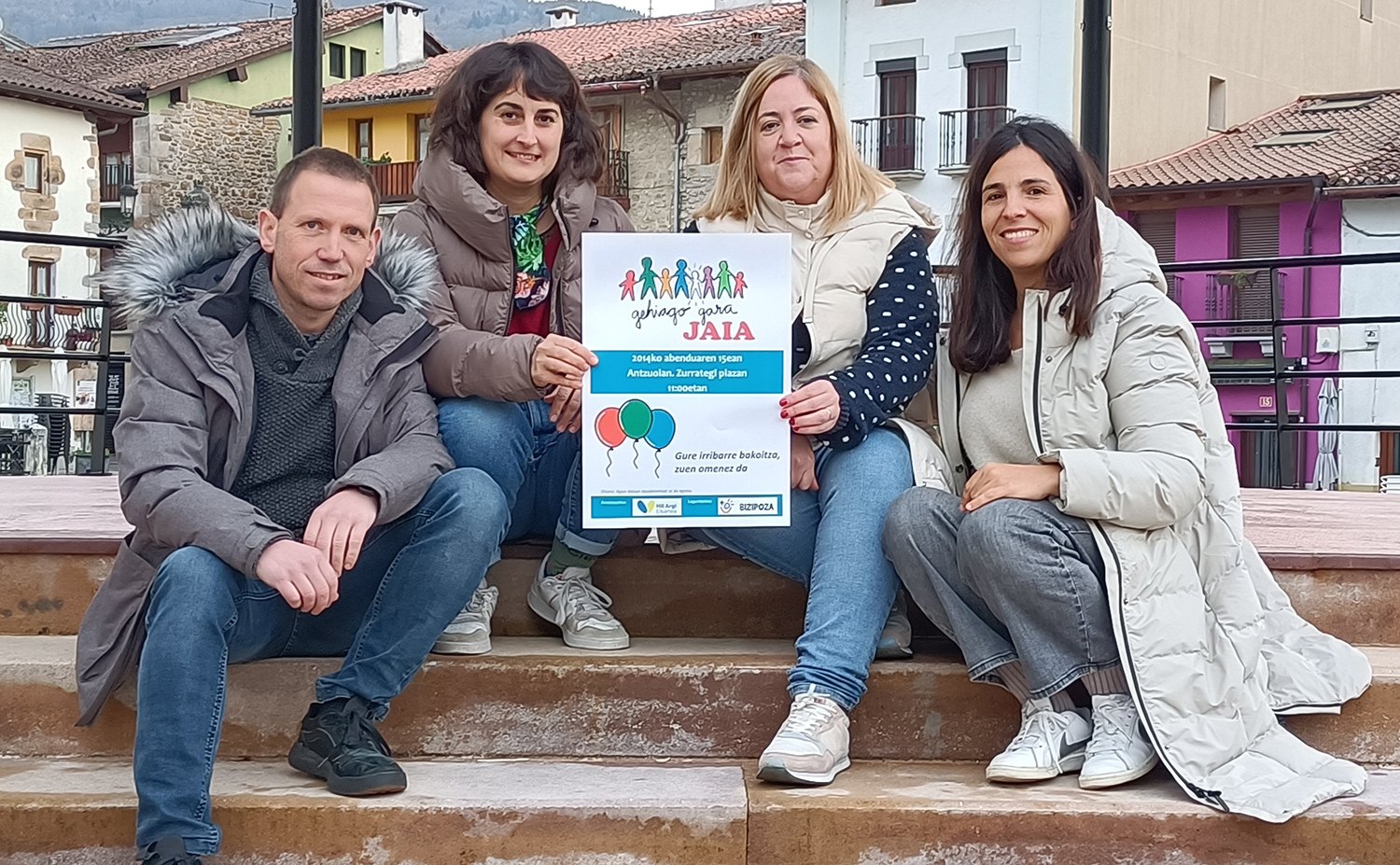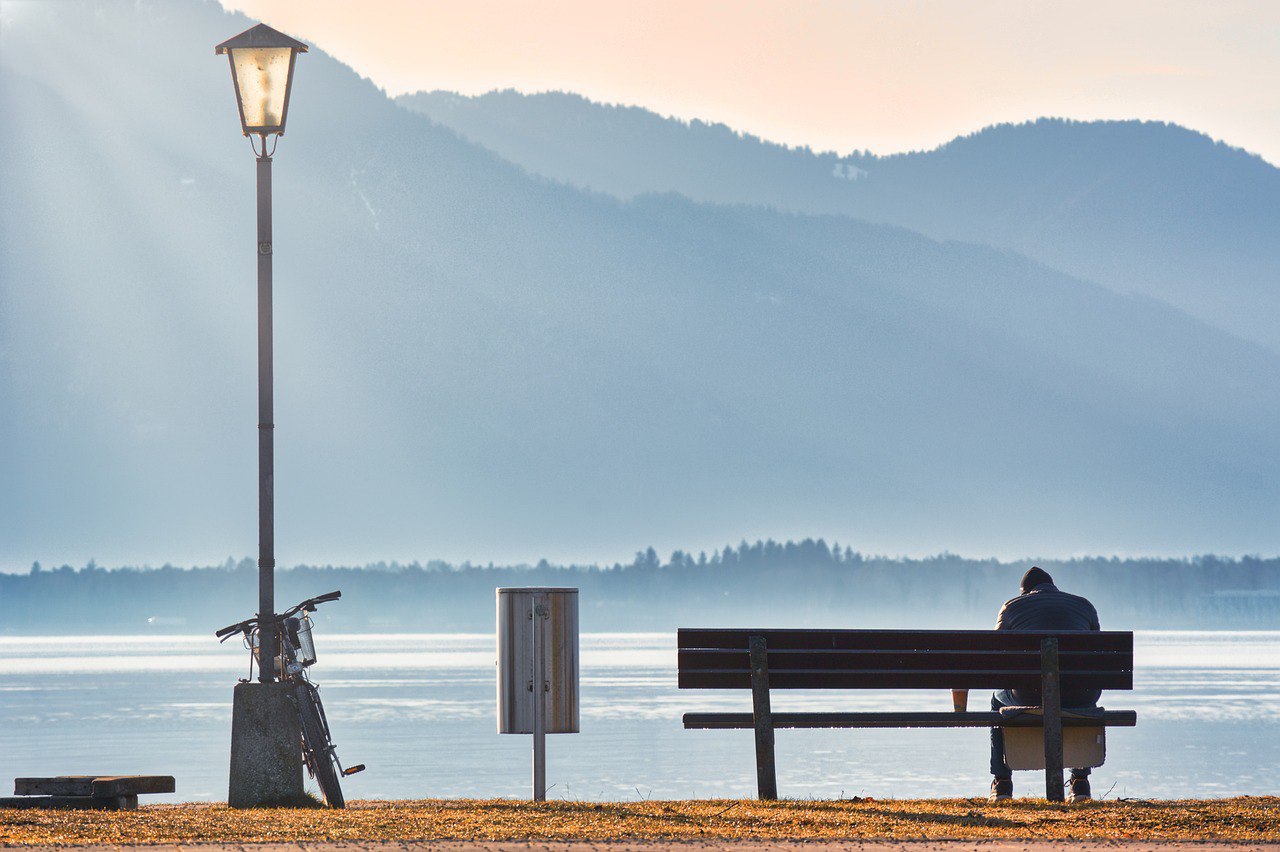"It is not about hiding death, but about accompanying"
- A student's father dies, or some school worker, someone close... The alarm has jumped at school and they've called the expert: How are we going to deal with the subject with the students? Naroa Martínez, a psychopedagogic accustomed to receiving these types of calls, instead of a parachutist in times of crisis, asks the professor to form the theme around death and to join the educational curriculum. The Basque Government Minister for Education says no. Martinez explains why it is fundamental to talk about death, grief, suicide, beliefs, fears, worries... with children.

You made the collection of signatures in the educational curriculum asking that the pedagogy of death be added, and the petition has come to the Basque Parliament, but the counselor Jokin Bildarratz answers that the decision of each center is whether or not it deals with the issue and that if you decide to work there are sufficient resources in the Berritzegunes.
The existing resources are scarce and obsolete, and they are material, there are no personal resources. Before, there was an expert in the matter who was going to help the centers, but since he retired there is no one dealing with death. There is also little in the curriculum: the life cycle is collected, we talk about birth, adolescence…, but when I last analyzed the Early Childhood Education curriculum, we only talked about death once. However, I interpret from the words of Bildarratz that the Education Counselor does not see the need to address especially death. However, to the extent that death is part of life, death must also be understood to understand life as a whole, and leaving the subject under the will of the centers and teachers does not guarantee the universal right of students to act around death.
Adults have not educated us in the pedagogy of death, in general we have not been told about it, and that is what we transmit to children, but if we break that trend, when there is a near death both the child and we will be more prepared to face it, the presence of literate in death will give us tools to predict the duels that will come and speed the process, at least in theory, because the unknown has more fear. Killing a close person can be a hard time, but if we have previously talked about the subject, we have previously shared the fears and doubts of each other, we will have many ways to make everything advanced and easier, both for the child and for adults, because we have been able to develop tools for when that reality comes, to understand that what happens to us is normal, to see who to talk about it... Therefore, I claim that death has to be fixed in the educational curriculum, something that is taken into account in the annual plan of the centers, and for this it is essential to train the teaching staff, more important than the material resources, to determine what stories on the subject should be read.
"With the younger ones there will be more a monologue to break our fears and taboos, and the child will receive something, but above all it will smile, emotionally gather what moves us when we talk about death"
Is there age to start talking about death? Do the little ones understand death? And how do you explain the issue based on the age, the reality of each child?
There is no minimum age to start talking about death, but death is transmitted and received differently depending on the child's age and abilities, because for example the youngest will not understand many concepts. Let us know that the concepts that are worked to explain death are five: the infunctionality – we clearly differentiate the body and the body in Euskera – and this concept is of great help to explain to the little ones what death is; the irreversibility – in this the cartoons have harmed a lot, because often the characters die and rise easily – the causality – the consequence of something that has happened – the perseverance When we understand those five we can say that we are able to understand death in its entirety, but it is a process, because they do not understand many concepts of being small, that does not mean that we cannot talk to them about death: with the younger ones will be more a monologue that does not come bad to express our fears and concerns and to break our taboos, and the child will receive something, but above all will smile with him, with the theme or with death. And gradually we're walking.
At a time of childhood, the feeling of fullness is common: they believe that they can lead to death if, for example, a month after being angry with someone, they have died. Guilt is always very present when we talk about death, even in adults – if I had, if I had said so… – and it is important that when the child is between 5 and 6 years old the guilt works, to make it clear that although at a given time he wanted someone to be dead, it is not the cause of that death. At the same time, when they discover that death can occur, a critical moment occurs and fears begin, fear of darkness, fear of killing oneself or someone of reference… If they know they can talk about all this from a young age, the road will be easier, because their questions and concerns will guide at every moment what they need. When they reach adolescence, they usually internalize the five concepts well.
He commented that it is a critical moment when they develop the fear of death. Do you want to protect yourself from it and not provoke trauma to prevent adults from talking about death?
We have not been educated in the pedagogy of death and are afraid of traumatizing children, but I think we are traumatized because they have not talked to us about the subject. Death will come, whether we speak of it or not, but it is more traumatic that something you do not know appears. In the past, the dead lived at home, but often without explaining anything to the children, without accompaniment, and now we have brought sick and dead people out of the city centre, to hospitals and tanneries, and we are still unaccompanied, one of the most serious problems. Accompaniment is the way to avoid traumas when leaving and hiding death. The same thing at school: I can recommend a good story or a good movie about death, but if we don't put the issue on the table and talk about it, if children and adults don't expose the fears and questions we have and we don't do the accompaniment, we don't.
Has the child asked me if I'm gonna die? Well, I'm not going to lie to him, knowing that children ask when they're capable of understanding, and we have to put ourselves in order to be able to hold the child to that answer. Yes, I would say that I am ever going to die, but I hope that the best we can do is to be as late as possible and take advantage of the moment, that we can continue to build experiences for that constancy or memory of the body mentioned above.
Another reason repeated for death to be taboo is the fear of the so-called effect, as if talking about death provoked death.
"At any given moment, fears begin, fear of darkness, fear of killing yourself or someone of reference... If you know you can talk about all this from a young age, the road will be easier."
So let's talk about death with children. It seems that to live natural death we have to treat death on a daily basis. How do we work on the subject in a daily way?
It's my question, how not? Throughout the course, in the classroom of twenty students, has anyone brought you anything related to death at any time? The war in Ukraine, coexistence, the multi-causal news of the Machistan murders, the rise of suicides and suicide attempts… There are a thousand options to address death, even in the nearest reality: that the flowers have left, that the children of the class have died in the tank, that the tree has been broken by the wind, that the grandparents or the pet of the house children have sent us. Why not extend the tree until death appears? There are so many examples, that what I find difficult is not to talk about death. And it's not about transmitting fear at all times, but we can't help but explain that death is part of our lives.
He talks about suicide. Does it require special work?
I think suicide needs special work with adults. It remains the taboo, although we have gradually begun to talk about mental health and more suicide. If there are 11-year-olds who have committed suicide or attempted suicide, they know it exists, and it is better to talk about it from the 5th or 6th grade [with 10-12 year olds] than to avoid it. It's the age I've put as a reference, especially for the ability to understand, but it can happen that younger people put the issue on the table, and then it should be before. Studies indicate that talking about suicide can cause a called effect, but there may be more cases that can be avoided if you explain where to go and what help to ask. Instead of hiding, let's alphabetize them like death on the subject of suicide, so they know the resources available. And yes, the issue requires special work, being a stigmatized death and with an important weight of guilt and responsibility.
"To explain death five concepts are worked: infunctionality, irreversibility, causality, memory and universality. When we understand these five we can say that we are able to understand death in its entirety"
As a sign of the need to introduce the subject into the school curriculum, you are called from many schools to ask for advice on the subject.
They usually call me because someone has died or is about to die and they don't know how to deal with the subject with the students, they are often very lost. From the direction of a school they called me at noon because in the morning a student did not attend school because he found his mother dead in bed, and now what are we going to do? They usually seek an immediate response, and I can help and advise you, but I cannot go home to tell you how you should manage the situation; the reality and functioning of the center is best known by the learning community, and that is why I claim that each center must develop death in its school and think and agree on a protocol of response to these crisis situations.
What are the main questions, concerns and fears of teachers and children?
Now what? And what books or movies do I recommend? are very common on the part of teachers. But to delegate the topic of death to a book or film is not to treat death, you have to talk about it. In the face of this near death, teachers want to know if students are traumatized or if children have to go to funerals (the first step is to ask the child himself what he will find previously informed). And as far as students are concerned, the important thing is to offer opportunities to talk about the subject, to convey that they can talk about death, whether they are at home or with teachers, but that they raise their concerns and questions. We have to be prepared for the reactions of children, for example one will tell you that your father is sad because his mother has died and wants to find a partner, or we should not be surprised if they ask children to draw death and make it colorful, in a style that lives death in Mexico. It's best to answer the questions they ask briefly and transparently, because sometimes we adults get complicated by ourselves in the answers, by our fears and taboos. In addition, we are not going to have an answer to all the questions, because often everyone has to build their own answer, for example, when they ask us what is after death; some think one thing and others think another.
"If I asked my children, I would say yes, I'll ever die, but I hope it's as late as possible and take advantage of the moment the best we can do."
What role do religion and belief play in the pedagogy of death? Can the different explanations of teachers and parents be a source of conflict?
My pattern is not to go against the family, because we have to walk together. In a secular center, the professor will not say whether he believes this or another or whether a belief is appropriate or inadequate, because today there are many religions and beliefs in the same classroom, and many children from unbelieving homes. If students lose what they think to the teacher, the answer should be no matter what the teacher believes, that everyone has to seek their answer and that there are many answers on the subject because we do not know. It is best to listen, because each student brings different explanations from home and if they help the child, they will be welcomed. In short, many families who are not faithful also tend to give explanations in the form of stories: As “the deceased is now in these stars.”
The euphemisms must be avoided. Saying “has gone to sleep forever” can lead the child to not want to sleep, fearing that he will not return, while saying “has gone on a long journey” can bring a feeling of abandonment…
What differences do mourning have in the process of death?The
pedagogy of death refers to the work before death and the pedagogy of grief to postmortem. One is front care and the other is the bandage, and both are complementary and necessary. If we rereply to Bildarratz, it somehow only impulses the pedagogy of grief, regardless of the previous work, the pedagogy of death, fundamental to its consolidation and simplification, when death occurs.
"We have not been educated in the pedagogy of death and we are afraid to traumatize children"
In this grieving process, how do you look at the child's emotions? Some parents worry about
a child who does not cry, who is not “sad enough.” If we haven’t addressed the issue before, maybe this child doesn’t know that the feeling associated with death can not only be sad, but it can be angry… Despite everything, there are very few pathological duels in children, and it is usually given because it has not found support in reference adults. In general, children will make the way and that should reassure us, but the most important thing is a good accompaniment of the adults in the area. What should the alarm turn on? When, after the initial state of shock, the grief prevents the child or the adult from continuing their daily routine, as well as if the child has undergone extreme changes. The goal is for this child to find in his or her environment some support to channel the grief, either among the adults in the house or among those in the school, because we should be concerned that the young person cannot expel anything in any space.
.jpg)
Gertakariak igande egunsentian suertatu dira 5:00ak aldera Gasteizeko Mitika diskotekan. Hildako pertsona 31 urteko gizon bat da, eta lurraren kontra buruarekin hartutako kolpe baten ondorioz hil da, antza atezainak kolpe bat eman ostean.
These were my last words when we left, held hand in your deep breathing sleep. Your heart stayed forever without a special, simple, dignified pain. As you want and demand. How we want and respect.
Already a month before the arrival of winter, the last days of the longest night,... [+]
First of all, we wish to extend our condolences to the family and friends of the woman killed in early August.
The people of Gaintxurizketa are fed up with the disillusionment of the administration and those responsible.
Those of us who live in the neighborhood are forced to... [+]
Paris 1845. The Labortan economist and politician Frédéric Bastiat (1801-1850) wrote the satire Pétition des fabricants de chandelles (The Request of the Sailing). Fiercely opposed to protectionism, he ironistically stated that the sailing boats asked for protection against... [+]
(Azken aldi luzean ezin naiz gauez atera, eta arratsaldez ere larri, eta asteburuetan ere ez, eta (jarri zaizue jada ihes egiteko gogoa), marianitoak eta bazkari azkar samarrak izaten dira nire enkontruneak. Konpainiak ondoegi aukeratu behar ditut. Ezin ditut poteoak... [+]












.jpg)









